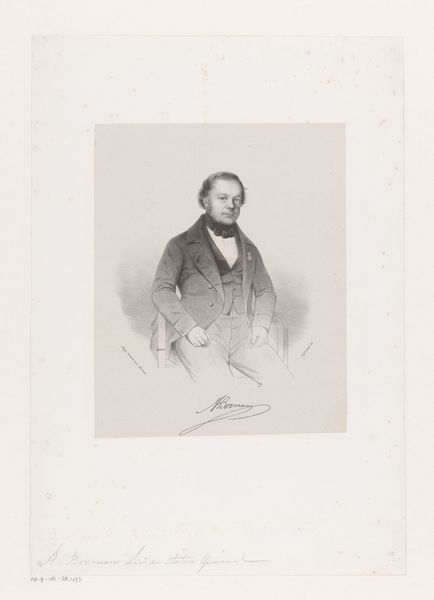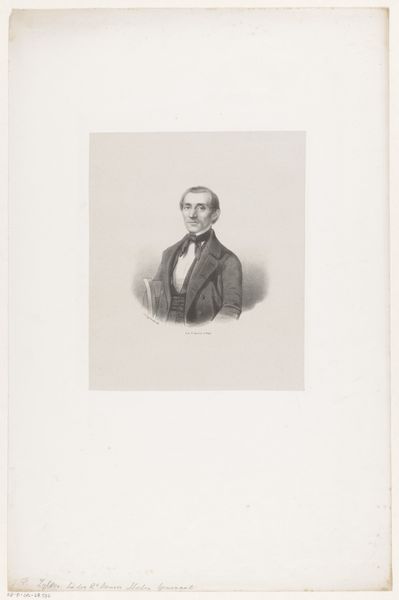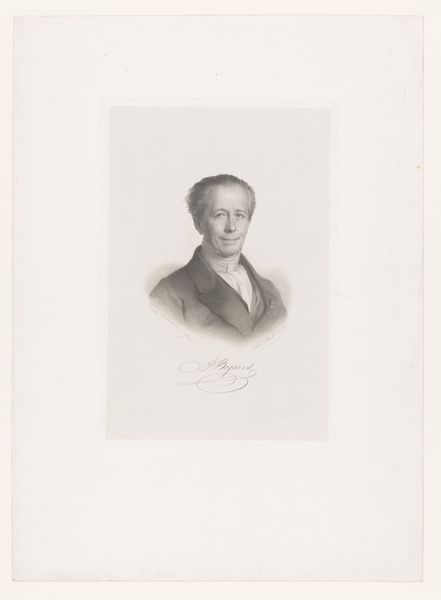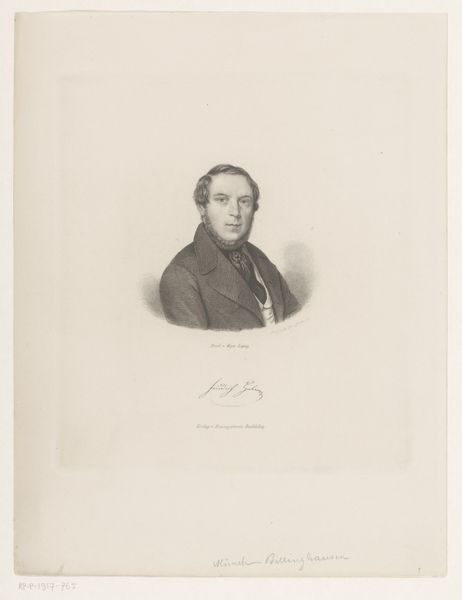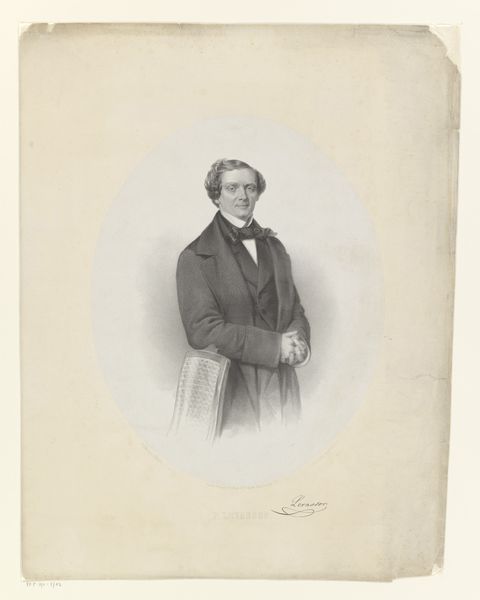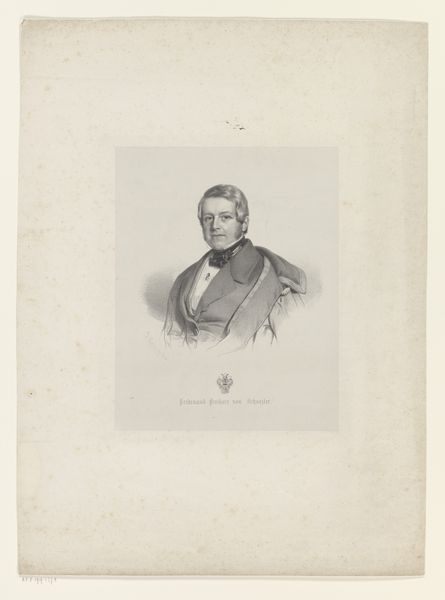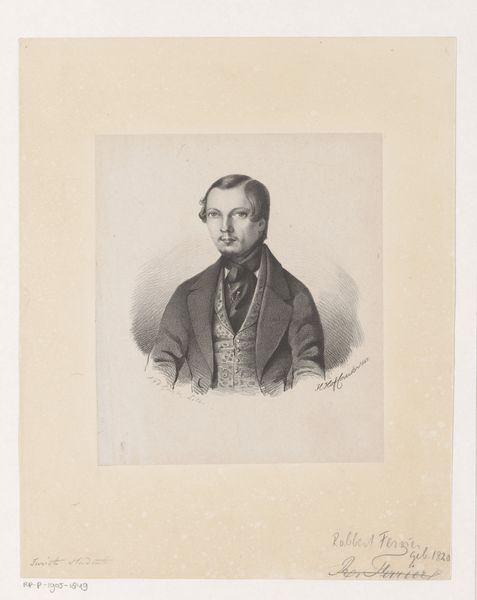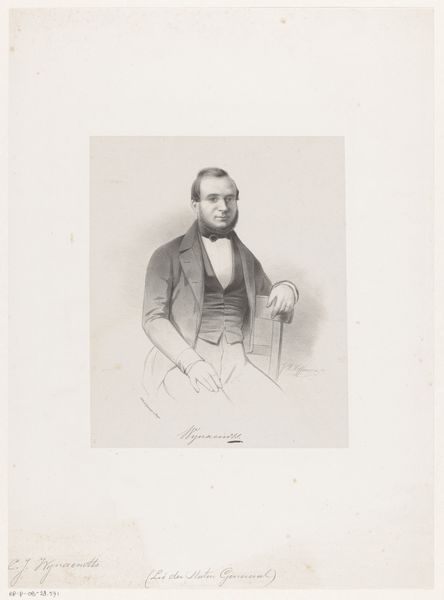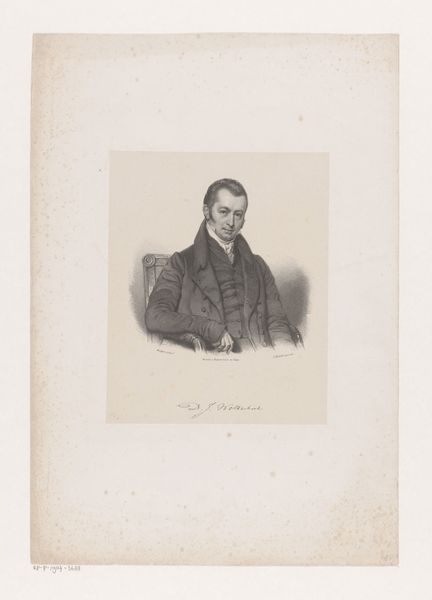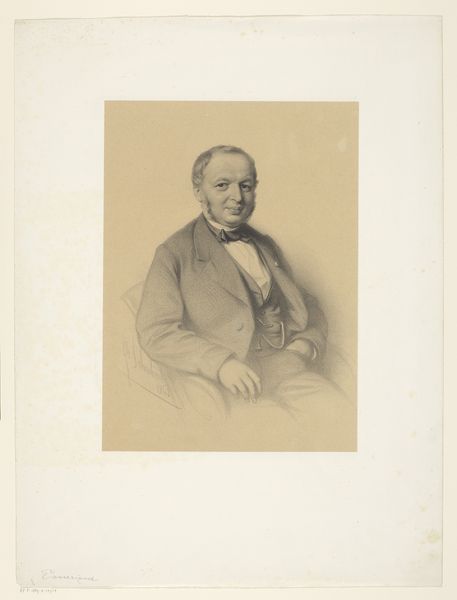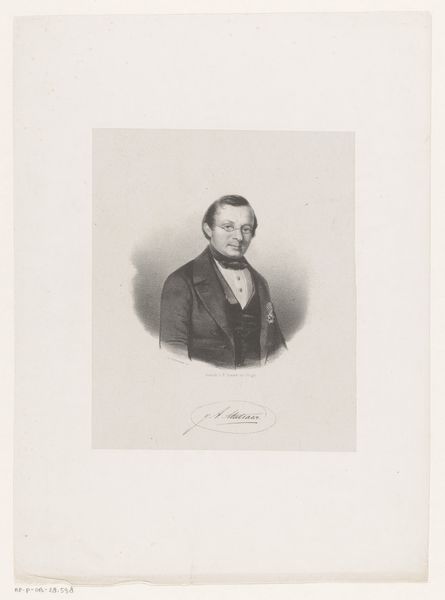
print, graphite
#
portrait
#
pencil drawn
# print
#
figuration
#
romanticism
#
line
#
graphite
#
academic-art
Dimensions: height 505 mm, width 350 mm
Copyright: Rijks Museum: Open Domain
Curator: What a striking image. This is "Portret van Gerrit Lebret," a print made with graphite, dating back to 1842. It embodies elements of Romanticism, executed with clear lines. Editor: He seems almost ghostly, emerging from the paper. The lack of a fully rendered background emphasizes the subject's intense gaze and lends an air of introspection. Curator: The historical context of portraiture here is interesting. During the 19th century, printed portraits democratized access to images of important figures. Who was represented and how becomes crucial. The rising merchant classes gained a form of prestige, as printed and published artistic images like this portrait, started emerging. Editor: I see this in terms of visibility too; consider the implications of a man of status depicted with such intentionality. It prompts questions about class, gender and how such factors intersected to shape access to representation. How would he have wanted to be seen? What statements are made with his attire and his somewhat aloof expression? Curator: Those are pertinent questions to be asked. And if we think about Academic Art, the figure would be presented almost in an idealized state. Whereas the Romantic influences lend to a focus on emotionality, combined with some very tight academic training it seems. Editor: The artist's choice of medium is significant. Graphite allows for remarkable detail and subtle gradations of tone, perfect for capturing not just likeness, but also a sense of inner life. A portrait can never only just be seen as 'a good likeness'. Curator: The institution had a huge play. Printmaking houses employed talented draughtsman to record influential and known people. The public gets what the "Institution" wants it to have. A well known philosopher or social commentator maybe, what kind of role models get distributed. How widely do they get distributed... These are all essential parts of seeing the complete history, and that's always interesting. Editor: Ultimately, this portrait invites us to consider the complex interplay between art, identity, and society in the 19th century. Curator: I agree; looking at this work, there’s such value in appreciating it from different yet equally relevant perspectives.
Comments
No comments
Be the first to comment and join the conversation on the ultimate creative platform.

